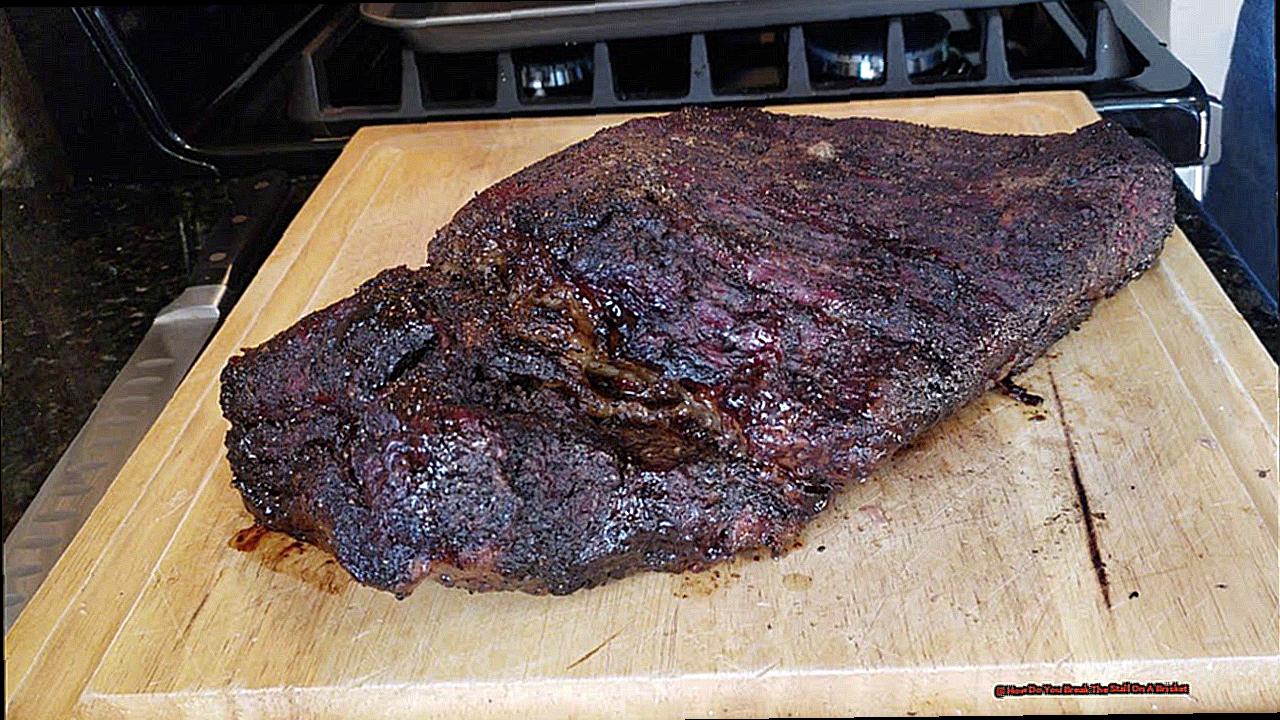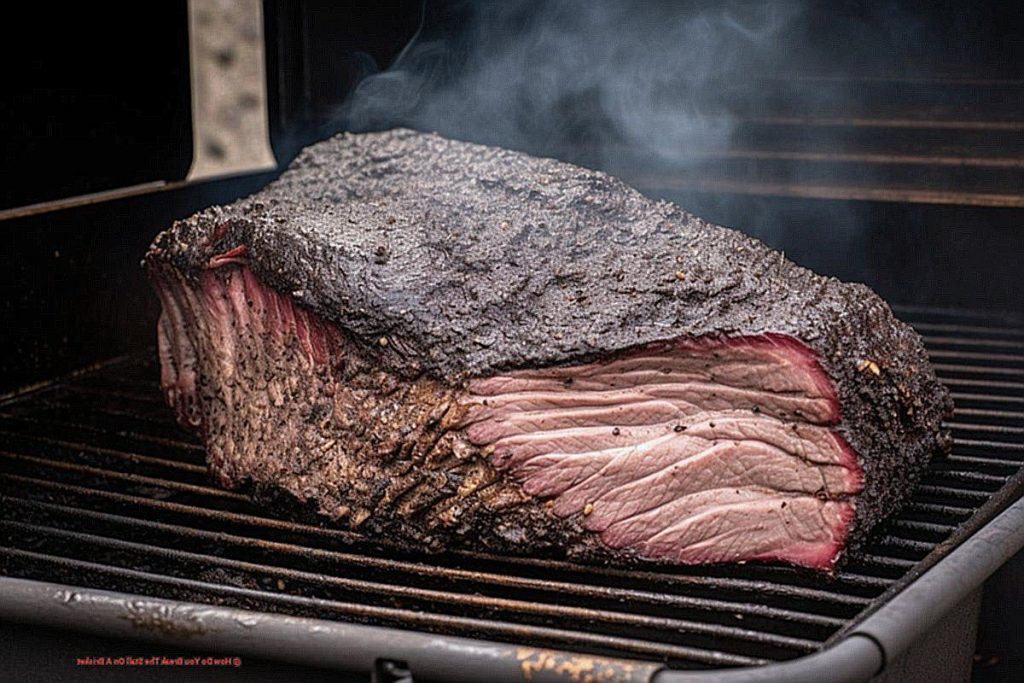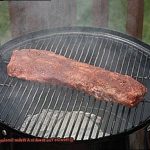Have you ever found yourself in a cooking rut, staring at your brisket and wondering why it’s not making any progress? That’s the dreaded stall, my friend. It can be frustrating to watch your meat stubbornly refuse to budge past a certain temperature. But don’t worry, we’ve got your back with some tips and tricks to break that stall and achieve the perfect flavor and tenderness.
When it comes to cooking brisket, the stall is one of the most challenging obstacles. It’s when the meat’s temperature plateaus or even drops during cooking, sometimes lasting for hours on end. This can cause cooking time to increase significantly and result in dry, tough meat.
But fear not. There are a few methods you can use to break that stall and get your brisket back on track. One option is wrapping it in foil or butcher paper to retain moisture and increase the cooking temperature. Another effective way is spritzing it with apple juice or water to create steam and help with the cooking process.
In this blog post, we’ll dive deep into how to break the stall on a brisket, providing expert tips for achieving that perfect tenderness and flavor. With these techniques under your belt, you’ll be able to conquer any stall and impress everyone with your mouth-watering brisket. So let’s get started – it’s time to break that stall.
Contents
Wrapping the Brisket in Foil or Butcher Paper
Smoking a brisket is an art form that requires patience, technique, and the right tools. One of the biggest challenges in smoking a brisket is the “stall,” where the internal temperature plateaus for hours, making it a frustrating ordeal for many grillers. However, there’s no need to throw in the towel just yet. The solution to breaking the stall may be as simple as wrapping your brisket in foil or butcher paper.

Foil wrapping is a popular choice among grillers, but it has its pros and cons. Foil creates a tight seal around the brisket, which keeps the moisture intact and produces a tender end product. However, some grillers find that foil can create a steamed texture rather than a smoky flavor. Additionally, foil can soften the bark, which may impact its texture and flavor.
Butcher paper wrapping has gained popularity in recent years as an alternative to foil. Butcher paper allows some moisture to escape while still keeping the brisket juicy and tender. It also maintains the texture and flavor of the bark. One downside may be that there is a slight loss of moisture due to not creating as tight of a seal as foil.
So which method should you choose? Ultimately, it comes down to personal preference. Some grillers use both methods in tandem to get the best of both worlds. Others may choose not to wrap their brisket at all and let it cook uncovered for the entire duration.
However, regardless of which method you choose, monitoring the internal temperature of your brisket regularly is essential. Breaking the stall may require patience and persistence, but with proper technique, it can be achieved for a mouth-watering end product.
In addition to wrapping your brisket in foil or butcher paper, there are other techniques you can try to break through the stall. Increasing your smoker’s temperature or spritzing your brisket with apple juice or vinegar during the stall are other options. Experimenting with different methods and finding what works best for your particular cut of meat is key to achieving delicious results every time.
Increasing the Temperature of Your Smoker
As a seasoned griller, you know that smoking a brisket is no easy feat. It takes time, patience, and skill to achieve the perfect balance of tenderness and flavor. But what happens when you hit that dreaded temperature plateau? The stall can be frustrating and leave you feeling defeated, but fear not – there are ways to break through it and increase the temperature of your smoker.
Let’s start by understanding why the stall occurs in the first place. It all comes down to moisture evaporation. As the moisture from your brisket evaporates during the cooking process, it creates a cooling effect that slows down the cooking process. This is where adjusting the air intake and exhaust vents come in handy. By opening up these vents, you allow more oxygen into the smoker, which increases the temperature. Adding more charcoal or wood to the firebox can also generate more heat.
However, it’s important to remember that increasing the temperature too quickly can result in overcooking or burning your brisket. Gradual increases in temperature are recommended to avoid this. You should also monitor the internal temperature of your meat with a meat thermometer to ensure it reaches the desired doneness without being overcooked.
If you’re still struggling to break through the stall, try wrapping your brisket in foil or butcher paper – aka the “Texas crutch.” This technique helps trap in moisture and prevent evaporation, which can speed up the cooking process and get you back on track.
To recap, increasing the temperature of your smoker is an effective way to break through the stall on your brisket. However, it’s important to do so gradually and monitor the internal temperature of your meat to avoid overcooking or burning. Wrapping your brisket in foil or butcher paper is another technique to consider for an extra boost.
Spritzing the Brisket with Liquid
Smoking a brisket is an art form, and every pitmaster knows that patience is key. But what happens when that patience wears thin and your brisket stalls in its cooking process? There is a secret weapon in the pitmaster’s arsenal: spritzing with liquid.
Spritzing with liquid is the act of lightly misting your brisket with a liquid of your choice. This technique helps break through the stall, which occurs when the internal temperature of the brisket plateaus and stops rising despite continued cooking. Spritzing can add moisture to the surface of the meat to cool it down slightly and prevent it from drying out.
There are many liquids that can be used for spritzing, including apple juice, beer, vinegar, and water. The adventurous pitmaster can even create unique flavor profiles by combining liquids. However, it’s important to use spritzing sparingly. Too much moisture can cause the bark to soften and become mushy, ruining hours of hard work. A light misting every hour or so is enough to keep the surface of the brisket moist without soaking it.
It’s important to note that not just any spray bottle will do for spritzing. Pitmasters should use a bottle that produces a fine mist instead of a heavy stream. This ensures that the liquid is evenly distributed across the surface of the meat. Additionally, opening the smoker too often when spritzing can cause temperature fluctuations that can prolong the stall. So be patient and trust the process.
Patience, Perseverance and Experimentation
Fear not, my friend. With patience, perseverance, and experimentation, you can master this culinary challenge and create a mouth-watering masterpiece.
Firstly, be patient. The stall is a natural part of the cooking process and cannot be avoided. It occurs when moisture on the surface of the meat evaporates, which cools the brisket. Instead of trying to rush through it, trust the process and remember that good things come to those who wait.
Perseverance is also key. The stall can be frustrating, but don’t give up hope. Keep monitoring your grill or smoker and make any necessary adjustments to keep the heat consistent. Remember, it may take some time for the temperature to start rising again.
Experimentation is crucial when it comes to breaking the stall. Every cut of meat is different, so it may take some trial and error to find what works best for your particular brisket. Some grillers swear by certain techniques or methods, while others prefer to try something new each time they cook.
One way to break the stall is to increase the heat of your grill or smoker. This can help to evaporate any remaining moisture on the surface of the brisket and keep the temperature rising. However, be careful not to increase the heat too quickly or too much, as this can cause the meat to dry out and become tough.
Another way to break the stall is to wrap your brisket in foil or butcher paper. This traps moisture inside and creates a “steam bath” effect that can help push through the stall. You can even add a small amount of liquid such as beef broth or apple juice to create even more steam.
Remember, experimentation is key here. Try different liquids and wrapping techniques until you find what works best for you and your brisket.
The Benefits of Breaking the Stall on a Brisket
Picture this: perfectly cooked, tender, and juicy meat that will leave your guests begging for more. Breaking the stall on a brisket is an essential step in achieving just that. It may seem daunting, but trust us, it’s worth it.
So what exactly is the stall? It’s the point during the cooking process where the internal temperature of the brisket plateaus. This can last for several hours and can be frustrating for grillers who are eager to serve their guests. However, it’s crucial to be patient and wait for the stall to break.
Now let’s dive into the benefits of breaking the stall on a brisket.
Firstly, breaking the stall ensures that your meat is cooked evenly throughout. During the stall, moisture inside the brisket evaporates, which cools down the meat’s surface. As soon as the stall breaks, the internal temperature of the brisket starts to rise again, distributing heat evenly throughout the meat. This results in every bite being cooked to perfection.
Secondly, breaking the stall helps to tenderize your brisket. Collagen in the meat breaks down into gelatin during the stall, giving it a tender texture and making it easier to chew. Rushing through this process can result in tough and chewy meat – not exactly what you’re aiming for. Breaking the stall allows collagen to break down into gelatin gradually over time, resulting in a deliciously tender and juicy brisket.
Lastly, breaking the stall on a brisket allows for a more flavorful end product. As moisture evaporates from your brisket during the stall, some of its flavors are carried away with it. But when you break the stall and allow moisture to be reabsorbed back into the meat during cooking, it enhances its flavor profile.
So there you have it – breaking the stall on a brisket is essential for achieving a perfectly cooked, tender, and flavorful piece of meat. Remember to be patient and wait for the stall to break. It may take some perseverance, but it’s well worth it in the end. To summarize, breaking the stall on a brisket:
- Ensures that your meat is evenly cooked throughout.
- Helps to tenderize your brisket for a deliciously tender and juicy end product.
- Enhances the flavor profile of your brisket.
Tips and Tricks for Breaking the Stall Quickly and Easily
As a pitmaster, few things are more frustrating than encountering the dreaded stall on your brisket. But fear not – there are plenty of tips and tricks to help you break through it quickly and easily.
Firstly, it’s important to understand what causes the stall in the first place. The moisture from the meat begins to evaporate when its internal temperature reaches around 150-160°F, which cools the meat down and causes it to plateau or stall. This process can last for several hours, but by implementing a few techniques, you can minimize the time spent in this phase.
One of the best ways to break the stall is by wrapping your brisket in foil or butcher paper. This method helps to trap moisture inside the meat, preventing it from evaporating and cooling the brisket down. While some pitmasters prefer foil, others swear by butcher paper. Try both methods and see which one works best for you.
Increasing the temperature of your smoker or grill is another effective way to push through the stall more quickly and reduce cooking time. However, it’s crucial not to overcook your brisket, as it can result in a dry and tough end product.
A water pan in your smoker can also help to break the stall by adding moisture to the cooking environment. The added moisture helps to keep the meat from drying out during the plateau phase.
Spritzing your brisket with a liquid during cooking is another great way to break the stall. This can be water, apple juice, or even beer. Spritzing helps to keep the surface of the meat moist and can prevent it from forming a hard crust that can slow down cooking.
Finally, patience is key when breaking the stall on a brisket. It’s tempting to constantly check on your brisket, but resist that urge and let it cook undisturbed until it reaches its desired internal temperature. Trust in your cooking skills and allow enough time for your brisket to cook low and slow until tender.
Common Mistakes to Avoid When Breaking the Stall
Breaking the stall on a brisket is a challenge that many novice grillers face, and it can be frustrating when mistakes are made that ruin the meat. However, by avoiding common mistakes, you can ensure that your brisket turns out perfectly. Here are some tips to help you avoid those common mistakes.
First and foremost, resist the urge to open the smoker too frequently. Constantly checking on your brisket every few minutes will release heat and smoke, which can affect the cooking process and prolong the stall. Instead, trust your thermometer and let the brisket cook undisturbed until it reaches the desired internal temperature.
Another mistake that grillers often make is not using enough fuel. A brisket takes several hours to cook, so you need enough charcoal or wood chips to last throughout the cooking process. Running out of heat or smoke before the meat is done can ruin the meat.
Wrapping the brisket too early is also a common mistake that can ruin your meat. While wrapping can speed up the cooking process and prevent drying out, wrapping too early can trap too much moisture, resulting in mushy or steamed meat instead of a nice bark. Wait until the brisket has reached around 160°F before wrapping it in foil or butcher paper.
Lastly, don’t rush the process. Trying to speed up the process by increasing heat or using shortcuts can result in tough and dry meat. A brisket needs time to cook slowly and evenly, so be patient and give it plenty of time to cook at a low temperature.
Conclusion
Breaking through the dreaded stall on a brisket can be a daunting task for even the most seasoned pitmasters. But with patience, perseverance, and a little experimentation, you can achieve that mouth-watering end product you’ve been dreaming of.
The stall occurs when the internal temperature of your meat plateaus or drops during cooking, frustratingly prolonging your cooking time. However, there are several techniques that can help you break through this barrier and get your brisket back on track.
One effective method is wrapping your brisket in foil or butcher paper to trap moisture inside and increase the cooking temperature. Another technique is gradually increasing the temperature of your smoker by adjusting air intake and exhaust vents. You could also spritz your meat with liquid such as apple juice or water to add moisture to the surface of the meat.
It’s vital to monitor your brisket regularly with a meat thermometer and avoid common mistakes like opening the smoker too frequently or not using enough fuel. By breaking through the stall, you ensure that your meat is cooked evenly throughout, tenderized for an incredibly juicy end product, and has an enhanced flavor profile.
Remember to be patient and persevere through any obstacles that arise. Experiment with different techniques until you find what works best for you and your particular cut of meat.






